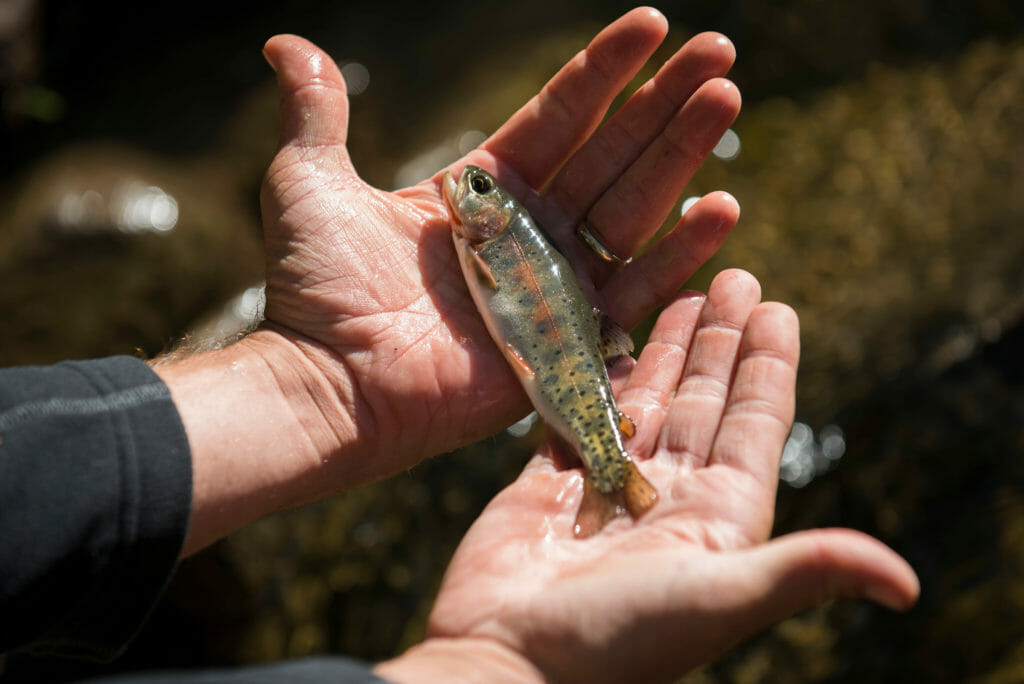An update on three federal rulemakings with impact to coldwater fisheries. What is proposed, what it means for TU, how we will respond and how you can help make your voice heard.

What is happening?
Recently there has been a flurry of rulemaking activity by the Trump Administration that will affect regulations for agencies that oversee the conservation of natural resources.
What is rulemaking?
Regulations (also called rules) carry the force of law and are developed by executive branch agencies. These rules are developed through rulemaking, an authority granted by Congress to the executive branch to help implement laws. This power is often delegated so that legislation doesn’t have to deal every single technical detail. In this way, Congress passes broad policy, but leaves it up to implementing agencies to get into the weeds.
To exercise this power, it must have been explicitly delegated by Congress. For instance, the Clean Water Act specifies that “The Administrator [of the EPA] is authorized to prescribe such regulations as are necessary to carry out his functions under this chapter.” To facilitate rulemaking, Congress enacted the Administrative Procedures Act to establish specific procedures that agencies must follow to establish rules and regulations. (more info on rulemaking)
Why does it matter for trout?
Because regulations carry the force of law, they can have a great impact on the way our natural resources are managed and how certain activities are regulated. Right now there are three rulemakings that each and every angler should be paying attention to: 1) the Forest Service’s revision to its NEPA regulations, 2) the Environmental Protection Agency’s proposed rule to implement Section 401 of the Clean Water Act, and 3) U.S. Fish and Wildlife Service and the National Oceanic and Atmospheric Administration’s National Marine Fisheries Service’s revisions to Endangered Species Act regulations.
Meet the rules:
Forest Service: The U.S. Forest Service has undertaken an initiative to update its regulations implementing the National Environmental Policy Act, or NEPA. Signed into law in 1970 by President Nixon, NEPA is one of our country’s bedrock environmental laws, providing citizens a voice in federal decisions affecting the environment, fostering transparency, and ensuring that decisions are informed with the best available science. TU’s firsthand experience with NEPA provides us a unique perspective, and while the agency is right to seek efficiencies, this rulemaking should not erode the basic tenets of NEPA or undermine opportunities or public involvement. More information and TU’s take. Comments are due October 21 and you can comment here.
Clean Water Act: Section 401 of the Clean Water Act grants states and tribes the right to review and certify projects within their jurisdiction to ensure that they comply with state water quality standards. In this way, projects that require a federal permit can be denied or conditioned by a respective state or tribe unless the they waive this right or fail to act within a reasonable period of time. The proposed rule would curb this authority by limiting the timeline for review as well as the scope of issues that states are able to review. Here’s an example of how the State of Oregon exercised their 401 authority to protect salmon and steelhead fisheries. More information and TU’s take. Comments are due October 21st and you can comment here.
Endangered Species Act: A final rule issued on August 12 makes several key changes for how agencies apply the Endangered Species Act into the future, including:
- Climate change ignored: The Fish and Wildlife Service won’t be able to designate critical habitat based on threats posed by climate change.
- Default protections no longer required: A species newly listed as threatened will no longer be afforded protection from a “take,” or from actions that kill the species or harm its habitat. This does not impact species already listed as threatened.
- Death by a thousand cuts: Everything but the direct actions that harm a species are defined away as “environmental baseline” actions can chip away at the health of critical habitat, creating death by a thousand cuts.
- Recovery not required: Prior to delisting endangered species don’t have to be “recovered,” and population data for the species does not have to “substantiate delisting.”
TU works with farmers, ranchers, land managers and miners who are willing to do more to protect listed species in return for greater assurances for their operations and healthier streams. That’s the kind of work that will make listed and candidate species healthier, not more at-risk. This rule is a missed opportunity and agencies should work on measures that make it easier to recover species, restore degraded watersheds, and protect pristine ones. More information and TU’s take.
For all of these rules, what you can do:
- Make your voice heard by commenting on a proposed rule! Here’s how.
- Stay informed and share on TU’s Facebook, Instagram and Twitter.
- Contact TU’s government affairs staff to learn more.

